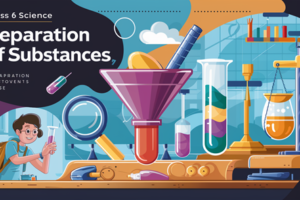
Science Chapter 11 – Air Around Us
NCERT Solutions for Class 6 Science Chapter 15 – Air Around Us
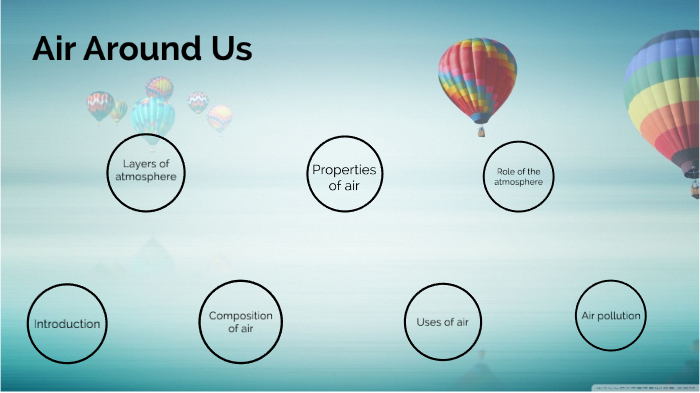
What is the Composition of Air? 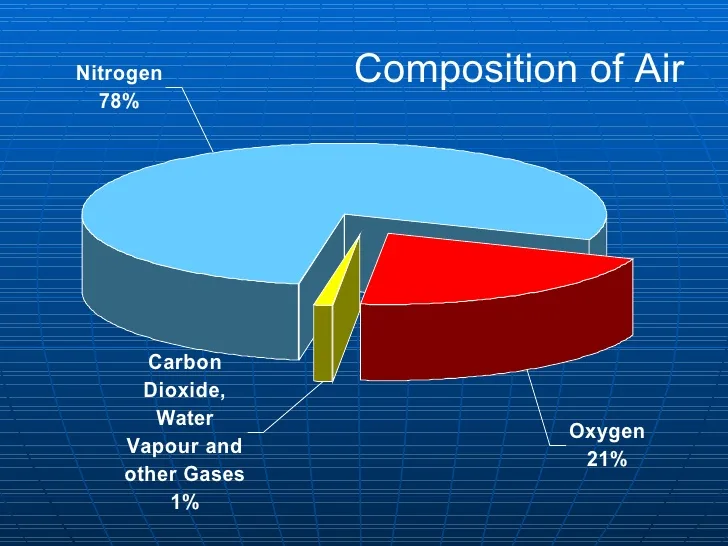
Air is present all around us. We can feel the presence of air but cannot see the air around us. Air is a mixture of gases. The different components of air include – 78% nitrogen, 21% oxygen, 0.9% argon, 0.04% carbon dioxide, and about 1% water vapour. Air plays an important role in breathing and burning. The existence of life on the planet Earth is mainly because of the presence of air.
How is the oxygen replaced in the atmosphere?
As we all know, air contains only 21% oxygen. All living organisms, including plants, require oxygen for breathing. Plants play an important role in the balance of oxygen and carbon dioxide in the atmosphere and are maintained through the process of photosynthesis.
Photosynthesis is a biological process in which all green plants synthesize their food in the presence of sunlight, water, and carbon dioxide. Oxygen gas is the most important by-product of this process.
Clouds
The vast white fluffy clouds seen in the blue sky are actually millions of tiny water droplets held up by air. The water vapour that evaporates from seas, rivers and other water bodies travel up into the sky to form clouds.
Air is Everywhere
- Our earth is surrounded by a thin layer of air.
- We cannot see air, but we can feel its presence in many ways.
- Leaves of the trees rustle, and the branches sway in the wind.
- The clothes were hanging on a clothesline swing because of the presence of air.
- This layer extends up to many kilometres above the surface of the earth and is called the atmosphere.
Colour of Air
Air has no colour, and one can see through it. It is transparent.
Moving Air
Moving air can be termed as the wind. We can feel the wind as it sways leaves on a tree or during storms the wind blows at a very high speed, even uprooting trees in their way.
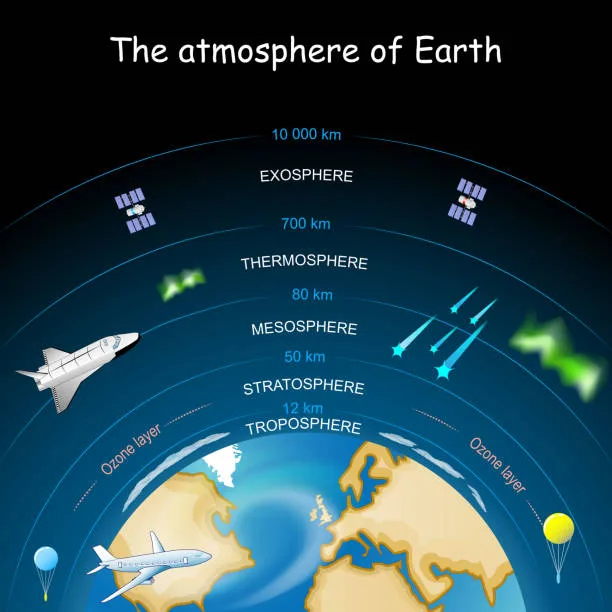
Atmosphere
- Protecting life: The atmosphere shields life on Earth from harmful ultraviolet (UV) radiation.
- Insulating the planet: The atmosphere keeps the planet warm by insulating it.
- Regulating temperatures: The atmosphere prevents extreme temperature differences between day and night.
- Driving weather patterns: The sun heats the atmosphere, causing it to convect and move air around the world, driving weather patterns.
- Moving water: The atmosphere moves water around the Earth through the water cycle.
Air as a Mixture
Air is a mixture of different gases and particles; oxygen, water vapour, nitrogen, carbon dioxide, dust and smoke.
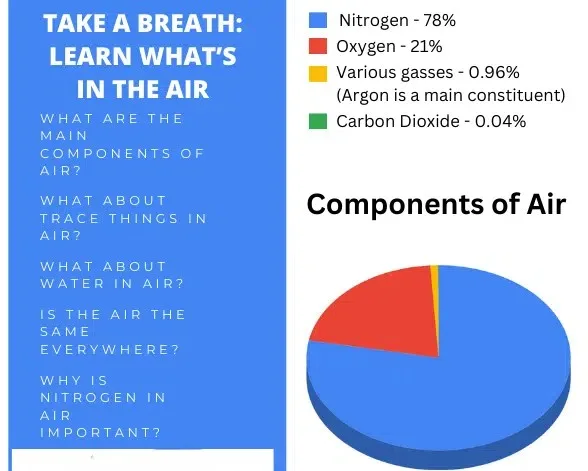
Main components of Air
The main constituents of air are nitrogen and oxygen. Air is 78 per cent nitrogen, just under 21 per cent oxygen, and the rest is water vapour, carbon dioxide and small concentrations of other gases.
Water vapour
Water vapour is present in the air as a gaseous form of water and is responsible for humidity.
Dust and smoke
The minor particles that are present in the air. The high amount of these particles in the air can cause pollution.
Breathing in Humans
Both animals and humans breathe by inhaling oxygen and exhaling carbon dioxide. This process is termed respiration.
Breathing in Plants
Plants respire through the process of photosynthesis. In this process, they take in carbon dioxide and give out oxygen as a waste, which we breathe in.
Photosynthesis
Photosynthesis is a biological process used by plants to prepare their food with the help of sunlight and energy. Carbon dioxide is taken in, and oxygen is given out as a waste product in this process.
Breathing in Fish
Oxygen dissolved in water is used by fish to breathe.
Symbiotic Cycle
- Organisms usually come together where each benefit from the other.
- We get oxygen and other products from plants, and they get not only carbon dioxide but other advantages from us.
- This is in the form of a cycle. Respiration and photosynthesis lead to the recycling of oxygen and carbon dioxide in the environment.
Fire
Fire requires oxygen for sustenance.
Frequently Asked Questions on CBSE Class 6 Science Notes Chapter 15 Air Around Us
Q1
What is air pollution?
Air pollution is the contamination of the indoor or outdoor environment by any chemical, physical or biological agent that modifies the natural characteristics of the atmosphere.
Q2
What are the ways to prevent ‘Air pollution’?
- Reduce unnecessary usage of vehicles.2. Elamite fireplaces in houses.3. Avoid burning lawns and leaves and use other methods for cleaning.
Q3
What is the nitrogen cycle?
The nitrogen cycle is the biogeochemical cycle by which nitrogen is converted into multiple chemical forms as it circulates among the atmosphere, terrestrial and marine ecosystems.
Q2: How will you prove that air supports burning, covered in Chapter 15 of NCERT Solutions for Class 6 Science?
Place two candles of the same length on a table. Light both candles. Cover one of the candles with an inverted glass tumbler. We can observe that the candle covered with the glass tumbler got extinguished after some time, whereas the other candle continued burning. The candle gets extinguished because the air component inside of the glass tumbler, which supports burning, is limited. Most of the component is used up by the burning candle. However, the other candle is getting a continuous supply of air. This component of air, which supports burning, is known as oxygen.
Q3 : List five activities that are possible due to the presence of air from Chapter 15 of NCERT Solutions for Class 6 Science.
The five activities that are possible due to air are listed below:
Photosynthesis
Cloud formation
Respiration
Transpiration
Winnowing.
Question 1 :
Which gas in the atmosphere is essential for respiration?
Answer :
Oxygen in the atmosphere is essential for respiration.
Question 2 :
The layer of air around the earth is known as ___________.
Answer :
The layer of air around the earth is known as the atmosphere.
Question 3 :
What is the composition of air?
Answer :
Air comprises water vapor, oxygen, nitrogen, carbon dioxide, dust and smoke.
Question 4 :
How will you prove that air supports burning?
Answer :
Place two candles of the same length on a table. Light both candles. Cover one of the candles with an inverted glass tumbler. We can observe that the candle covered with the glass tumbler got extinguished after some time, whereas the other candle continued burning. The candle gets extinguished because the air component inside of the glass tumbler, which supports burning, is limited. Most of the component is used up by the burning candle. However, the other candle is getting a continuous supply of air. This component of air, which supports burning, is known as oxygen.
Question 5 :
How will you show that air is dissolved in water?
Answer :
Take some water in a container. Heat it slowly on a tripod stand. Before the water begins to boil, look at the inner surface of the container. We observe tiny bubbles inside.
These bubbles come from the air dissolved in water. When you heat the water, to begin with, the air dissolved in it escapes. This experiment concludes that air is present in the water.
Question 6 :
Why does a lump of cotton wool shrink in water?
Answer :
The lump of cotton wool shrinks in water because the air inside the cotton lumps is replaced by water which makes the layer stick together.
Question 7 :
The component of air used by green plants to make their food is ___________.
Answer :
The component of air used by green plants to make their food is carbon dioxide.
Question 8 :
List five activities that are possible due to the presence of air.
Answer :
The five activities that are possible due to air are as follows:
- Photosynthesis
- Cloud formation
- Respiration
- Transpiration
- Winnowing
Question 9 :
How do plants and animals help each other in the exchange of gases in the atmosphere?
Answer :
During the process of respiration, animals and plants consume oxygen from the air and release carbon dioxide gas into the air. Besides, green plants also release oxygen gas by utilizing carbon dioxide during the process of photosynthesis. Hence, in this way, plants and animals help each other in the exchange of gasses in the atmosphere.
Also Visit: Readspot



